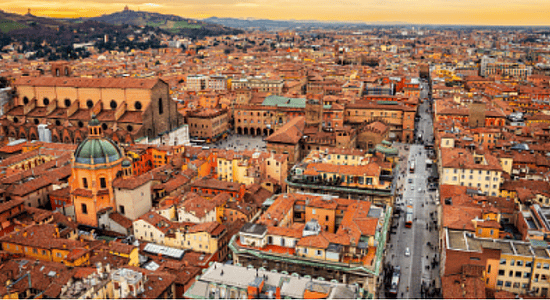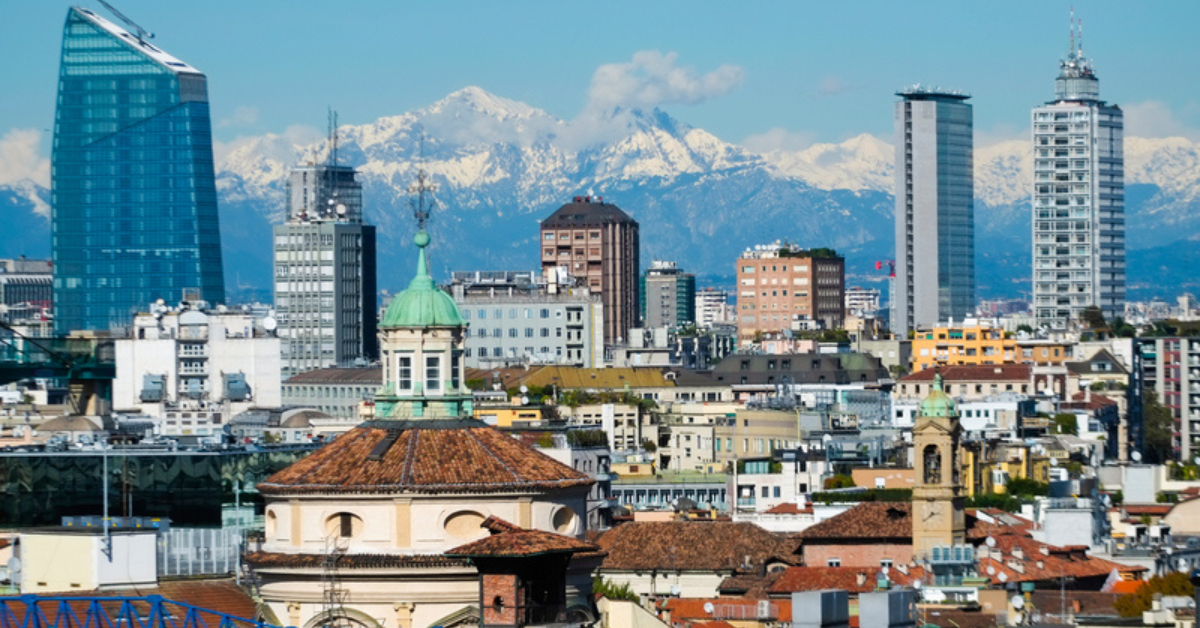SMART CITIES FOCUS: ITALY
Intertraffic takes a detailed look at the Italian smart city movement from three different perspectives over two parts. In part two, high-level representatives from Bologna and Milan give us a behind the scenes look at how their cities are helping to speed the mobility transition in decidedly different ways.
THE VIEW FROM MILAN
Paolo Campus, director of Milan’s Agenzia Mobilità Ambiente e Territorio (Agency for Mobility Environment and Territory), tells Intertraffic about what drives his city’s efforts to integrate smart mobility thinking with advanced technological implementations.
“Technological innovation plays a fundamental role as it enables the connection between public administration, businesses and citizens through advanced digital services. AMAT, i.e. Agenzia Mobilità Ambiente e Territorio (Milan’s Agency for Mobility Environment and Territory), an in-house company, totally owned by the City of Milan, is committed to providing strategic planning and technical studies for urban mobility, environment quality and land use management.
Due to its multidisciplinary competence, AMAT supports the City of Milan in developing projects and services with an approach that integrates mobility and energy issues with the environmental themes by advanced technologies and solutions. Urban Intelligence and Smart Cities are the two paradigms that, through the implementation of sustainable mobility, digital transformation, Open Data, and the Internet of Things applications, steer large urban agglomerations towards inclusive and sustainable development.
Urban Intelligence and Smart Cities are the two paradigms that, through the implementation of sustainable mobility, digital transformation, Open Data, and IoT applications, steer large urban agglomerations towards inclusive and sustainable development.

AMAT logo en text
AMAT supports the Municipality of Milan both through the development of projects for the application of new technologies, through the development of technological systems capable of integrating with the latest generation of digital services, such as the mobility service application (MaaS), and the implementation of experimental projects, such as those related to autonomous driving in urban areas or smart parking.
Text 2
As for the MaaS, the ultimate goal the city of Milan is aiming at is to integrate different modes of transport into a system that creates travel experiences, through the use of smart technologies. This new mobility paradigm offers new opportunities to improve the freedom of choice of mobility users, by improving the efficiency and quality of service.
Milan, with the support of AMAT, has recently participated in a tender launched by the Department for Digital Transformation of the Italian Presidency of the Council of Ministers and the Ministry of Sustainable Infrastructure and Mobility, called Mobility as a Service for Italy, and selected as one of 3 cities, together with Rome and Naples, that will be able to test innovative local transport solutions, introducing the Mobility as a service paradigm. Planning a trip, hopping on public transport, booking and driving a shared vehicle, paying for those services will all be possible under the same app. This scheme will merge different transport operators in the city onto the same online platform. Users will find public and private mobility options (from metro, bus, and tram to shared cars, bikes, scooters, and more). Endowed with a map and an online payment system, the platform will also allow residents and city users to personalize their journey and find travel and price options that better fit their mobility needs.
Alongside the integration of multiple transport modes, Milan will jump into the potential of automated mobility.
As a matter of fact, within the same national MaaS funding framework, the city was awarded the ‘Living Lab’ tender. Milan has been selected as the only city that will run a Living Lab project based on a smart road equipped with technological infrastructures and tools that will be able to interact and communicate with cars or buses on the existing 90-91 trolley bus ring line. The aim is to increase driving safety thanks to the development and new possibilities offered by new technologies by carrying out tests for self-driving cars by car manufacturers or other operators, as well as MaaS interchange systems in some stations.
Alongside the integration of multiple transport modes, Milan will jump into the potential of automated mobility.
Finally, in order to manage and control the areas for loading and unloading goods and the parking bays for the disabled located within the Bastioni area of Milan (the inner area of the city), the municipal administration, with the scientific and technical support of AMAT, is implementing an experimental project that involves the installation of special sensors on these types of bays. The sensors are equipped with magnetic and infrared technologies and are able to detect the presence or absence of a vehicle on the parking bay and send the status communication to a central platform using the low range network (LoRa). The information will be provided to the users of the two respective types of parking bay and to the local police force for enforcement measures. Both users will be provided with a specific app to check-in on the parking space and to check where free parking spaces are located, so as to avoid drivers cruising around the city in search of available parking spaces, with resulting environmental benefits.”

The view from bologna
Alessandro del Piano, director of territorial planning and mobility for Città Metropolitana di Bologna, the seventh-largest city in Italy and capital of the Emilia-Romagna region, says his city’s smart mobility efforts are founded on three principles, the most important of which is its rich history.
Text3
Bologna as a city has two main historical assets: one is the university that was founded in 1088, and the other is the mechanical manufacturing that comes from the same period. The University of Bologna is very important and widely known for its research – for example, we are soon going to have the biggest data centre in Europe. As for the other example, mechanical manufacturing, Bologna is home to the likes of Ducati and Ferrari, although Ferrari is more between Bologna and Modena, but this area is one of the biggest and most important for mechanical engineering in the world.
Why is Bologna considered to be a smart city? There’s not a simple answer to this question as there are several reasons however I believe that Bologna is smart largely because of its rich history and because this history really is an actual, tangible presence.
The city is based on three pillars. There’s a strong manufacturing sector and a strong and these are the pillars of the Bolognese society. And the third pillar is our civic history. In 1254 Bologna was the first city in Europe to abolish slavery. Maybe these are not the answers your readers might have expected but those three pillars contribute hugely to why Bologna is a smart city – in the literal sense.”
At the heart of much of Bologna’s smart city offerings is the Tecnopolo Bologna CNR, a research establishment that is part of the Network of 10 Technopoles of Emilia-Romagna, a fundamental component of the regional innovation ecosystem. Created with a total investment of €24 million co-financed by the EU Structural & Investment Funds and the Emilia-Romagna Region, Tecnopolo Bologna CNR promotes innovation in both consolidated and emerging industrial systems. The main sectors of interest include various manufacturing industries such as automation, packaging, health care and wellbeing, agri-food, environmental industries.
Tecnopolo Bologna CNR has over 6000 square meters of research infrastructures, laboratories and state-of-the-art instrumentation. But, as Del Piano explains, it’s all very well to have a cutting-edge research establishment on your doorstep but it’s work will go to waste if it isn’t coupled with smart thinking at a governmental level.
Bologna is also a smart city because the public administration is very strong and because there is a strong cohesion between public administration and private enterprises. It’s a beautiful relationship. If we look at environmental and mobility issues then we can say that we are trying to be smart there, too. We have had a Sustainable Urban Mobility Plan (SUMP) in place for some time, but it’s not an ordinary SUMP, it applies to the whole Metropolitan area.”
Del Piano is rightly proud of this unique SUMP that was introduced in 2019. It is one of the few in Europe that contends with a whole metropolitan area and not just the city. One of the main objectives of Bologna’s SUMP is the target of reducing traffic emissions by 40% by 2030 compared to 1990 levels. The SUMP focuses on people, their rights and needs, for the development of a smart, sustainable mobility system that ‘has the quality of infrastructures, transport services, the liveability of the city spaces and structures as key principles.’
One of the main objectives of Bologna’s uniquely metropolitan SUMP is the target of reducing traffic emissions by 40% by 2030 compared to 1990 levels. The SUMP focuses on people, their rights and needs.
The SUMP aims to reverse the current modal split, where motorised transport dominates: by 2030, 60% of total journeys in the metropolitan area of Bologna will be taken on foot, bike or public transport, reducing the greenhouse gases produced by motorised traffic by at least 40%.
One of the most innovative aspects of the SUMP is the shift from the concept of “municipal” public transport to the “metropolitan” one.
Says Del Piano: “Another turning point for the territory is the focus on soft mobility, particularly cycling and walking for short trips. For this reason, the metropolitan Biciplan (Bicipolitana) foresees the implementation of 700km of new continuous and interconnected cycle tracks, and the accurate identification of areas where motorised traffic is banned. In addition, the concept of "Area 30" will be changed to that of "City 30", meaning that it will be not possible to exceed 30km/h along the entire road network in Bologna, with the exception of the main arterial routes. The implementation of a "sustainable mobility bonus" – in the form of discounts on fares and subscriptions – is going to be applied for those who will renounce to use their own motorised vehicle, in favour of more sustainable transport solutions.” The Ciclovia del Sole initiative, a 50km bike route through the heart of the Emilia-Romagna countryside, is just one of a number of schemes designed to coax reticent Italians out of their cars and onto their own self-powered means of transport.
THE CITY OF KNOWLEDGE
In March the Metropolitan Mayor Matteo Lepore announced that plans to create a City of Knowledge in Bologna (La Citta della Conoscenza) in a former railway yard. The Mayor described the development as "a key factor in the change of the city with the local government in the throes of allocating €22.7 million of the total funding of €106.6 million resources to two projects. “They are pieces of a great project that will launch Bologna at a European level", says. “It will be a tourist itinerary, there will be artistic spaces, very beautiful parks and walking along it you can discover Bologna as the City of Knowledge.”
* Milan and Bologna are approaching the idea of the smart city, the notion of the smart city, in different ways that will both reflect their individual identities and provide the rest of Europe with the results of a united, Italian effort.
Thanks to Dr Florinda Boschetti for additional information.
Share your story
Do you have an innovation, research results or an other interesting topic you would like to share with the professionals in the infrastructure, traffic management, safety, smart mobility and parking industry? The Intertraffic website and social media channels are a great platform to showcase your stories!
Please contact our Sr Brand Marketing Manager Carola Jansen-Young.
Are you an Intertraffic exhibitor?
Make sure you add your latest press releases to your Company Profile in the Exhibitor Portal for free exposure.






